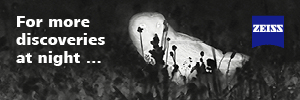- Acanthorhynchus superciliosus
Identification
12·5–15·5 cm (5-6 in)
- Long slender curved bill
- Longish tail
Male
- Black head
- Grey back and wings
- Red band behind neck and from throat to breast
- White eyebrow and cheek bands
- Distinctive white and black band on breast
Female
- Rufous nape
- Throat/breast uniform grey/brown
Distribution
South-western Western Australia.
Taxonomy
This is a monotypic species[1].
Habitat
Heath and woodland, particularly where Banksia and other Proteaceae plants grow. They also visit gardens.
Behaviour
Diet
The diet consists mostly of nectar with the addition of insects. The feed up to about 30m
Breeding
They build a nest from bark, plant stems, down and spider webs. The clutch consists of 1-2 eggs which are usually incubated by the female.
References
- Clements, J. F., T. S. Schulenberg, M. J. Iliff, D. Roberson, T. A. Fredericks, B. L. Sullivan, and C. L. Wood. 2016. The eBird/Clements checklist of birds of the world: v2016, with updates to August 2016. Downloaded from http://www.birds.cornell.edu/clementschecklist/download/
- Handbook of the Birds of the World Alive (retrieved November 2016)
Recommended Citation
- BirdForum Opus contributors. (2024) Western Spinebill. In: BirdForum, the forum for wild birds and birding. Retrieved 23 April 2024 from https://www.birdforum.net/opus/Western_Spinebill
External Links
Search the Gallery using the scientific name:
Search the Gallery using the common name:
GSearch checked for 2020 platform.





